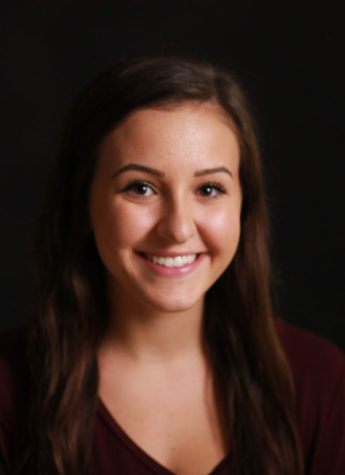Road Less Traveled
Sometimes it isn’t about the expectations or the majority; sometimes it’s about following your heart and being the best you.
When I think of an original, I think of someone who isn’t scared to take risks and make their own plans. I think of someone who’s independent and strong in their beliefs. Someone who isn’t afraid to walk down the path of the road less traveled.
I am one who is constantly taking the road less traveled. In our most recent magazine, the “O” issue, I wrote a feature about sex. For some, this topic is a road they would prefer that a high school student publication wouldn’t travel down. As I traveled down this path that hadn’t really been traveled down before, I was aware of my surroundings. Trust me, I can hear you. Going down the road less traveled is original, but it’s not always easy. Most of the time, it’s about taking a risk and hoping for the best, and that’s exactly what I did. With my head held high, I wrote about a topic that I thought would be beneficial and relatable to some of our student body. My intentions with the story were to make people read between the lines. The point was for people to find comfort with the fact that they weren’t alone, no matter what the topic was. I traveled down the road of going against the grain, being different and breaking expectations in order to discuss something that I felt was important–something that mattered.
The value we are founded on is that the road less traveled is the one that gives a voice to the voiceless. A part of that means that not only are there fluffy stories to tell, but also stories that are a lot darker in nature. In order to correctly show the student voice, there are positive and negative stories to be told. We can’t always just tell a story that everyone wants to hear. Sometimes stories are more on the controversial side because that’s just the way the world works. The state of Illinois finds this concept so important that this summer they passed the HB 5902 law, which states that students in public high schools will now have a legally protected right to choose what content will be part of their publications, even those produced for credit as part of a class.
This magazine was the start of a road that had been traveled once before, but for the staff that produced it, this was a brand new journey. The “R” issue, or the fall sports magazine, is the product of our brand new Sports Media class, which brings together students from all over the school to talk about, live in and produce quality content about sports. While this issue obviously completes the fall season for our Sequoit athletes, we felt that exploring issues related to fall sports was certainly a road we wanted to travel down. This magazine will also be organized differently than the sports magazines last year. We felt it was important to define the sections of the sports magazines, much like we define the sections in our student life magazines. Throughout the “R” magazine, you will see three sections: off the field, on the field and beyond the field. We believe these three sections represent the holistic experience each athlete is accustomed to in whatever sport they play.
In this magazine, you will see a variety of perspectives about coaching, understand what happens when siblings get a little competitive and recognize why size does matter. Additionally, we tackled topics like parents being a little too invested in sports, athletes that balance band and another sport and we gave it the good ole Tom Tom try at field hockey. On a heavier note, the features in this magazine are concerned with issues that pertain to all of our sports, each of which has, like the “O” magazine, cliche headlines; this time they will all begin with “R.” Off the field, we focused our time on two features: one on the Vikings feeder program written by managing editor Paige Hope and another on the athletic code of conduct written by digital director Rebekah Cartlidge. Once we venture on the field, department editor Ben Gutke and senior editor Alex Ruano found out what it means when an athlete is truly “Rotten to the Core.” Lastly, beyond the field includes a number of personality profiles of athletes, an alumna and a parent. Additionally, our final feature, “Run for the Money,” written by department editor Kaylee Schreiner, looks at the role of scholarships and their impact on the future of Sequoits’ athletic careers.
We thank you for taking the time to read our magazine and hope that you, much like us, decide that sometimes the road less traveled is the road worth taking.


